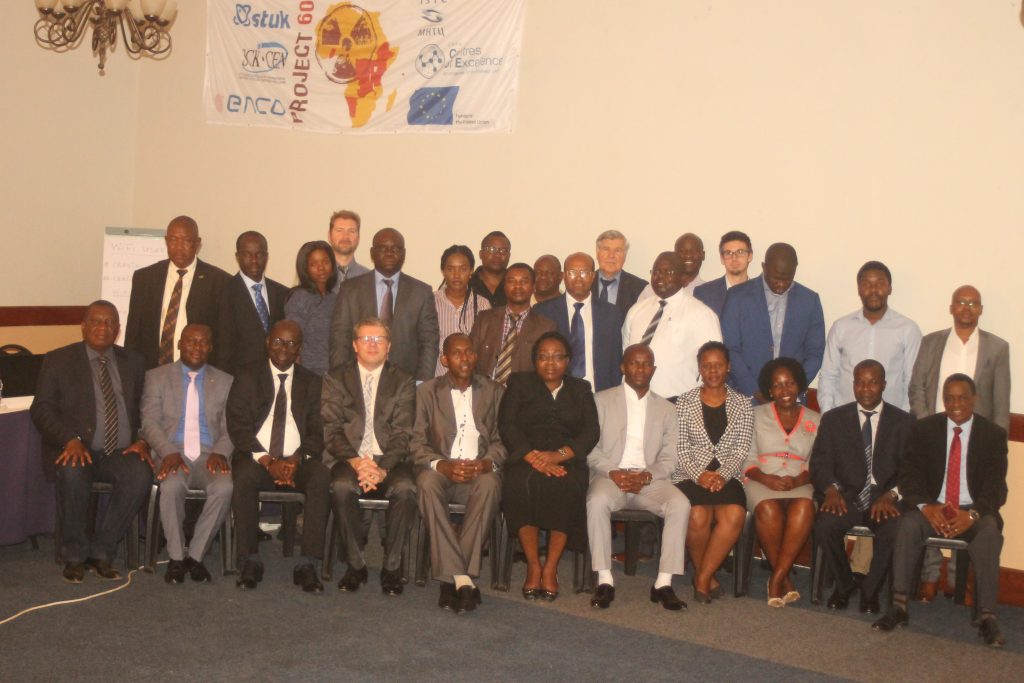In the frame of the CoE project 60, the Progress review meeting was conducted on 22 November 2018 in Lusaka, Zambia. To minimize the costs, it was organized in the continuation of the WS on the Preparation of TTX and FX, also held in Lusaka.
27 national experts from 11 partner countries (PC) of the P60 attended (including five female participants) as well as four experts of the Implementing Consortium (ENCO, SCK-CEN, and STUK).
The aim of this Progress meeting was to take stocks on the activities so far and the planned activities, to discuss about the progress made by the PCs, including events and actions taken, to discuss the situation on the collected documents in the PCs and to clarify the expectations of the review phase and on future development of national documents to reflect the gaps identified and recommendations. In term of the identification of gaps, the “Tool” to be used for the review is reflecting IAEA standards and international recommendations. Intensive interactions are necessary (and envisaged) between the Consortium and national experts during the review process and also during the phase where recommendations are established.
Each PC presented the progress made so far within the P60 events, including presentations, outlines, standard operating procedures, demonstration of equipment, field exercises, etc.
The main future events were presented by the Consortium experts and discussed: the train the trainers’ events; the field and table top exercises; the first expert missions for Burundi and DRC; the second expert missions in all PCs; the awareness workshops; and the regional workshop on regulatory review results.
The number of national documents collected during the first expert missions and/or sent by the local experts vary across the PCs. It was stressed that the Consortium is still expecting to receive more documents (including drafts): laws and regulations, inventory of radioactive material, RN emergency response plans, standard operating procedures, and full list of available and operational detection equipment.


